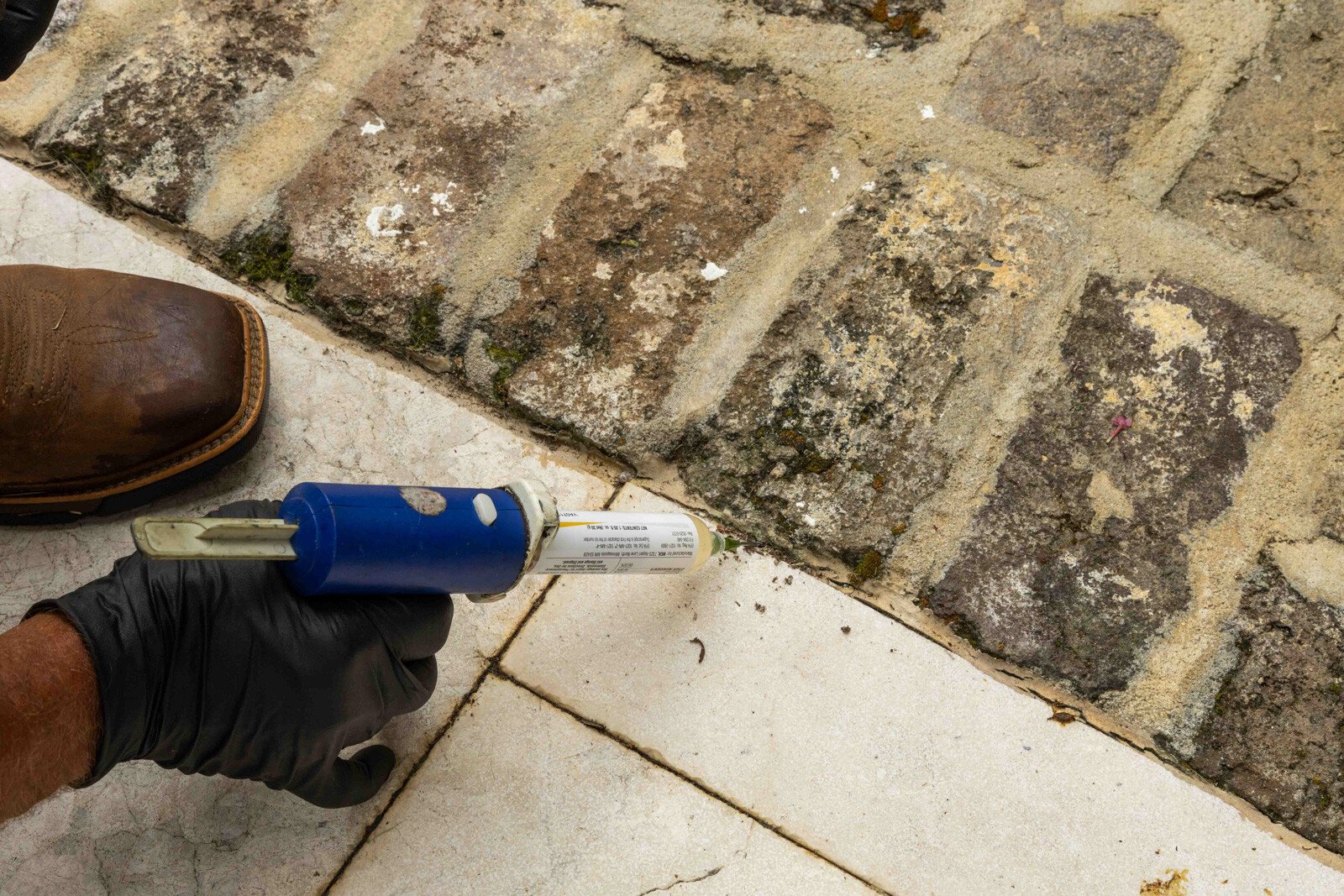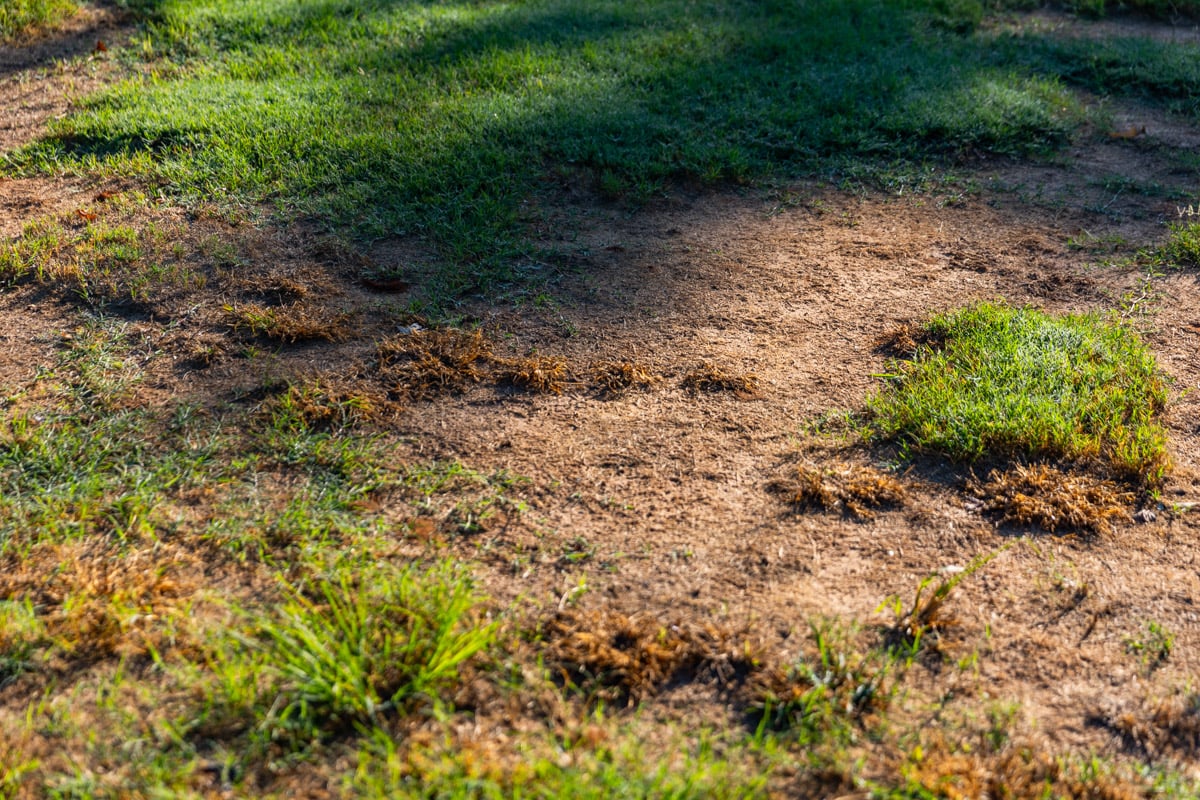
Are Ants Just a Nuisance, or Can They Actually Damage My Home?
Ants. Those little black bugs that just show up in droves and seem to take over tiny areas in your Memphis home and make you crazy.
Whether it’s a corner of your floor, a kitchen counter, or a section of your bathroom, once you see one ant, you tend to see so many more. These pests never travel alone.
Ants are certainly a total nuisance. But can they be more than that?
While some ants are mostly nuisance pests, others can be a real concern—not only for the structure of your home but also for the health of your family living inside.
Are Ants Just a Nuisance? Not Always:
- 8 Most Common Ants in Memphis & North Mississippi
- Fact: You don’t have to have a dirty house to have ants
- Fact: Yes, ants CAN damage your home
- Fact: DIY ant spraying doesn’t work
- Fact: Exclusion is your No. 1 priority
- Fact: Professional treatment involves multiple tactics
Let’s look at common ants in your home and dive into these facts about ants we listed above to prove just how beyond annoying ants can be.
8 Most Common Ants in Homes in Memphis and North Mississippi
Ants are a nuisance because, once inside, they can cause problems. They can contaminate food and even damage wood.
This makes ants pretty annoying. Knowing the ants you may see inside is the first step in better-understanding ant infestations. While one ant may look just like another, some differences in the ants can most often invade your home here in Memphis and North Mississippi.
Here are some typical ants that can get into your home.
1. Odorous House Ants
The most common ants in your home are odorous ants.
These tiny ants are 1/16 to ⅛-inches long. They are typically brown or black, and their name comes from crushing them creating a nasty smell—like something rotten.

Odorous ants nest under mulch, leaves, or between deck boards or patio pavers. You can even find them in walls or under siding.
Since these ants have a sweet tooth, you’ll most likely find them in the kitchen near your food or your pet’s food.
2. Carpenter Ants
Carpenter ants are the largest ants in your home. Compared to other ants you see outside that are ⅛ of an inch long, carpenter ants can be up to ⅝ of an inch long. You can’t miss them.

Carpenter ants like moist, rotting wood. They are usually found in door and window frames or sills, where you can find higher moisture and humidity. They also like decks, porches, patios, fences, and sheds.
Carpenter ants are attracted to homes with softwood, wood rot, or water damage. They tunnel into wood, chew it and build nests. While they don’t eat wood, they constantly tunnel in it, causing structural damage. You might see wood shavings, light rustling in your walls, or sagging wood if carpenter ants are in your home.
3. Pavement Ants
Pavement ants are light brown or black. Their legs are usually a lighter color than the rest of their body.

As if the name doesn’t give it away, pavement ants got their name because they likely nest beneath driveways and other concrete structures. In your home, they can be found under floors and on walls.
4. Pharaoh Ants
These ants in your home are very small — reaching approximately 2 millimeters long. They stand out with yellow or red bodies and red or black abdomen.
Pharaoh ants develop large colonies; to make matters worse, those colonies can break apart and create their sub-colonies.
5. Acrobat Ants
These ants in your home are light brown to black and, like other ants, can be a nuisance in your home. Not only because they can infest your home and cause trouble, but because they can bite when they are disturbed.

They also acrobatically raise their abdomens over their thorax and head when irritated, which is how they get their name.
6. Thief Ants
These yellowish to light brown ants are tiny and often confused with pharaoh ants. Also known as sugar ants, these pests are one of the tiniest household ant species.

Though they are attracted to sugar and spilled grease in your home, that’s not what they’re known for stealing. They habitually thieve larvae, pupae and food from other nearby colonies.
7. Argentine Ants
Argentine ants love to forage for sweets and crumbs.

Since you have many of these in your home that these ants can be attracted to, your ant control for homes should include exclusion and perimeter pest control to keep them out and prevent an infestation.
8. Fire Ants
Fire ants are smaller, at 1/10 to 1/14 inch. They can be red, brown, or black with copper-colored heads. The nasty thing about these ants is that they hunt down and sting anything that they think is a threat. They are also very territorial and protective of their space.

Most of the time, however, you’ll find this ant in your yard, not your home. However, perimeter ant control for homes is important to keep these ants with painful stings away from you and your family.
Ant Infestation Facts
Ants can show up without warning … and they never come alone. Before you know it, you have a full-on ant problem.
These ant infestation facts can help you better identify signs of ant infestation, understand the damage ants can cause, and provide tips for proper ant control in homes.
You Don’t Have to Have a Dirty House to Have Ants
Yes, sweet spills and crumbs will attract ants and other bugs.
But don’t be so hard on yourself. While keeping a clean house and storing foods in sealed containers is helpful to keep pests away, ants also seek shelter and water. And your home happens to be a source for all of these things.

For instance, if it’s dry and hot outside, ants may seek the humidity your home offers. Water leaks can draw them in, so stay on top of those.
So even if you clean every day, you can see signs of ant infestation anyway.
Yes, Ants CAN Cause Damage
Ants in your home can cause some damage.
While they aren't as big a threat as termites, carpenter ants can tear up wood frames. As their colonies increase in size, they can push through the wood, weakening and damaging it.
This can cause a lot of costly damage to your home.
In addition, ants can ruin food and contaminate surfaces, causing even more safety issues and pocketbook issues.
DIY Ant Spraying Doesn’t Work
Sure, you can stop at the local hardware store and pick out some ant traps to put out.
However, ant control for homes can waste time and money if the ant is not identified or the product is not properly applied.

Certain traps only work for certain types of ants. And, most times, if you don’t find the colony, you’ll eliminate ants from one area only to see them pop up again in another area.
Exclusion Is Your No. 1 Priority
You can do some things to try and limit the amount of ant infestations in your house.
- Keep your home clean. Wipe away spills, store foods in airtight containers, and follow proper trash disposal procedures. Also, store your dog, cat, or bird food in airtight containers and clean pet bowls.
- Ensure you fix water leaks and ensure gutters and downspouts guide water away from your home.
- Seal spots where wires or pipes come into your home and caulk gaps in winter, doors, or around the foundation.
- Prune trees and shrubs that are close to your home to limit entry.
- Stack firewood at least 20 feet from your home since ants hang out there.
Professional Treatment Involves Multiple Tactics
While the above exclusion strategies help keep ants away when you don’t have them — and are the preferred first arm of defense — when you do have an ant infestation in your house, you want to eliminate them.
Lawn & Pest Solutions starts with investigation techniques as part of an integrated pest management strategy. Our technicians, who see ants all the time, know where to look for them to find the source of your problem.

Then, starting with baits is a good next step. Lawn & Pest Solutions uses a non-repellant ant control product that hides a protein or sugar source as bait. The ants think these are food and take them back to their colonies, spreading the insecticide to the queen and knocking out the main infestation.
The proper tactics will eliminate the pests and help limit your frustration and the need for callbacks.
Once the infestation is gone, quarterly exterior barrier treatments can help keep ants out because the product includes a smell or taste that ants don’t like.
Trust Lawn & Pest Solutions’ Ant Control For Homes
Ants are not only a nuisance but can also be a big problem in your home, spreading bacteria. This is especially true when dealing with the more persistent species like odorous, argentine, and fire ants.
Don’t let ants in your home become a problem. Use exclusion tactics and keep ants out with professional perimeter pest control.
For best results, try our Pest 360 approach. We aim to ensure you can live in peace without pest problems in your home. Let us make that happen for you.
Do ants keep ruining your day? We’d love to help you regain control of your Memphis or North Mississippi home. Get started today with a free quote. Together, we’ll prepare a custom plan that is best for you. Then, you can relax without constantly inspecting your counters and floors for ants.
Image Sources | Carpenter Ants, Thief Ants, Odorous House Ants, Argentine Ants, Pavement Ants, Acrobat Ants
